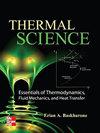保压取心中钻井液压力对岩心切割影响的离散元分析
IF 1.1
4区 工程技术
Q4 THERMODYNAMICS
引用次数: 0
摘要
在高地应力环境下取心过程中,岩石岩心因应力释放而受到损伤,岩心盘取是这种损伤的突出表现。保压取心对地应力无直接影响,对地应力释放的影响与钻井液压力有关。然而,以往的岩心切割数值模拟研究大多没有考虑取心过程中的流体压力。本文采用离散元法软件PFC3D对取心过程进行数值模拟。根据无钻井液压力和有钻井液压力两种情况,以及5 ~ 160 MPa的不同水平地应力,观察了随钻岩心的破裂和剥离情况。此外,还研究了取心过程中破裂和剥离的规律,探讨了保压取心对防止破裂和剥离的作用。仿真结果显示了圆盘在时间和空间上的非线性分布趋势。本文章由计算机程序翻译,如有差异,请以英文原文为准。
Discrete element analysis on the influence of drilling fluid pressure on core discing in pressure-preserved coring
In the process of coring in a high in-situ stress environment, the rock core is damaged due to stress release, and core discing is a prominent manifestation of this damage. Pressure-preserved coring has no direct effect on in-situ stress, and its influence on stress release is related to drilling fluid pressure. Yet fluid pressure in the coring process was not considered in most former numerical simulation studies on core discing. In this paper, the discrete element method software PFC3D is used to conduct a numerical simulation of the coring process. According to the two conditions without drilling fluid pressure and with it, and different horizontal in-situ stresses of 5-160 MPa, fracture and discing of the core with drilling are observed. In addition, the law of fracture and discing in the process of coring was studied, and the function of pressure-preserved coring to prevent fracture and discing is explored. Simulation results show nonlinear trends in distribution of discs both in time and in space.
求助全文
通过发布文献求助,成功后即可免费获取论文全文。
去求助
来源期刊

Thermal Science
工程技术-热力学
CiteScore
2.70
自引率
29.40%
发文量
399
审稿时长
5 months
期刊介绍:
The main aims of Thermal Science
to publish papers giving results of the fundamental and applied research in different, but closely connected fields:
fluid mechanics (mainly turbulent flows), heat transfer, mass transfer, combustion and chemical processes
in single, and specifically in multi-phase and multi-component flows
in high-temperature chemically reacting flows
processes present in thermal engineering, energy generating or consuming equipment, process and chemical engineering equipment and devices, ecological engineering,
The important characteristic of the journal is the orientation to the fundamental results of the investigations of different physical and chemical processes, always jointly present in real conditions, and their mutual influence. To publish papers written by experts from different fields: mechanical engineering, chemical engineering, fluid dynamics, thermodynamics and related fields. To inform international scientific community about the recent, and most prominent fundamental results achieved in the South-East European region, and particularly in Serbia, and - vice versa - to inform the scientific community from South-East European Region about recent fundamental and applied scientific achievements in developed countries, serving as a basis for technology development. To achieve international standards of the published papers, by the engagement of experts from different countries in the International Advisory board.
 求助内容:
求助内容: 应助结果提醒方式:
应助结果提醒方式:


